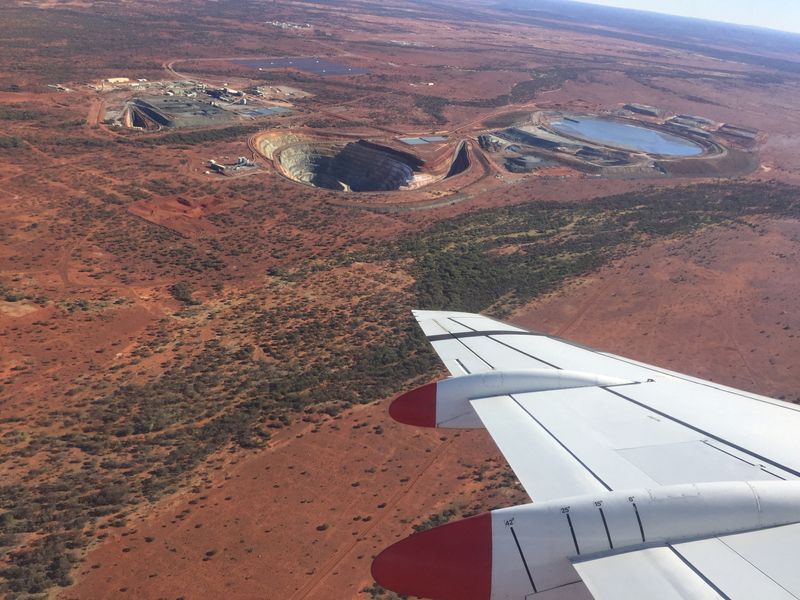By Clyde Russell
LAUNCESTON, Australia (Reuters) -A consistent contradiction in Australia's mining sector is that while there is a pressing need for new mines to be developed to provide raw materials for the energy transition, the capital to do so is hard to find.
The relatively easy part is getting an exploration permit, doing some initial drilling and proving up a resource.
The hard part is then raising the finance to develop the mine from exploration to production.
Despite the expected strong demand for critical minerals such as lithium, cobalt and rare earths, junior mining companies are struggling under the traditional model of raising equity and debt financing.
There are several reasons for this, including the higher cost of debt given the sharp increase in interest rates in recent years, and while rates may have peaked, they aren't expected to drop rapidly in coming years.
Equity financing is also tricky, given potential investors generally want relatively quick returns and are really looking for mines that are close to production, rather than those still years out from first shipments.
A further issue is that both debt and equity investors generally require some sort of certainty of a return, and this means having some idea of the future price of the commodities involved.
The problem is there often isn't viable futures pricing for certain speciality metals, and what prices that do exist are largely beholden to developments in China, the world's largest commodity buyer and processor.
Australian government data goes some way to illustrate the problem, with the Resource and Energy Major Projects Report, released in December by the Department of Industry, Science and Resources, showing a decline in the value of committed and completed projects in 2023.
The value 86 committed projects underway in 2023 fell to A$77 billion ($50.3 billion), with the bulk of the money being invested in oil and gas, with critical minerals accounting for 11 projects valued at A$5 billion.
While the 2023 figure is down slightly from 2022, it's also well below the more than A$200 billion that was invested at the peak of Australia's resources boom in 2015, a time when major iron ore mines and liquefied natural gas ventures were being built.
Australia is the world's largest exporter of iron ore, ranks second in LNG and is also the biggest shipper of metallurgical coal and lithium.
The question is how does a budding miner with a great resource for an in-demand mineral get the money to build and operate a mine?
While government incentives may help, it's unlikely that this source of support will be enough.
ROYALTIES TO THE RESCUE?
It may be that royalties, or streaming, a form of financing that has been successful in North America can be transplanted to Australia.
This allows a miner to access capital up front in return for granting the provider a royalty of a certain percentage of the revenue from sales once production commences.
The royalty also typically lasts for the life of the mine and can also be applied to any expansion of the resource.
There are several companies that provide this type of financing based in North America, with Franco Nevada being among the best known.
However, much of the royalty financing has been in the gold mining space, and not in critical minerals or other metals.
Australia's Deterra Royalties is trying to change this by looking to invest in critical and other minerals.
The Perth-based company was spun out of Iluka Resources in 2020 with its main asset being a royalty over a major iron ore resource in Western Australia, operated by BHP (ASX:BHP) Group.
This provides Deterra with a solid revenue stream and capital to invest, the problem is getting the Australian market to embrace streaming.
Chief Executive Julian Andrews told the Melbourne Mining Club at an event last week that his company's business model isn't well understood in Australia, but the assets are, while in North America they get the model but don't understand the assets.
"We have a mandate to provide funds to mines to develop new projects," Andrews said.
Getting junior mining executives to understand royalties is the main challenge for Deterra, as well as getting investors in the company to understand that royalties are more than just receiving strong dividend payments.
What may work for companies like Deterra is that they are less focused on things like whether a debt loan can be repaid, or whether the share price of a miner will rally.
They are focused on the life of the mine and the expected production, given that the royalty is from the revenue and other factors such as operating costs are less important.
Andrews is clear that royalty investing isn't the panacea to the worries of Australia's junior mining sector, rather it's part of the solution.

It just may be with higher for longer interest rates and nervous equity investors, the time is ripe for royalties.
The opinions expressed here are those of the author, a columnist for Reuters.